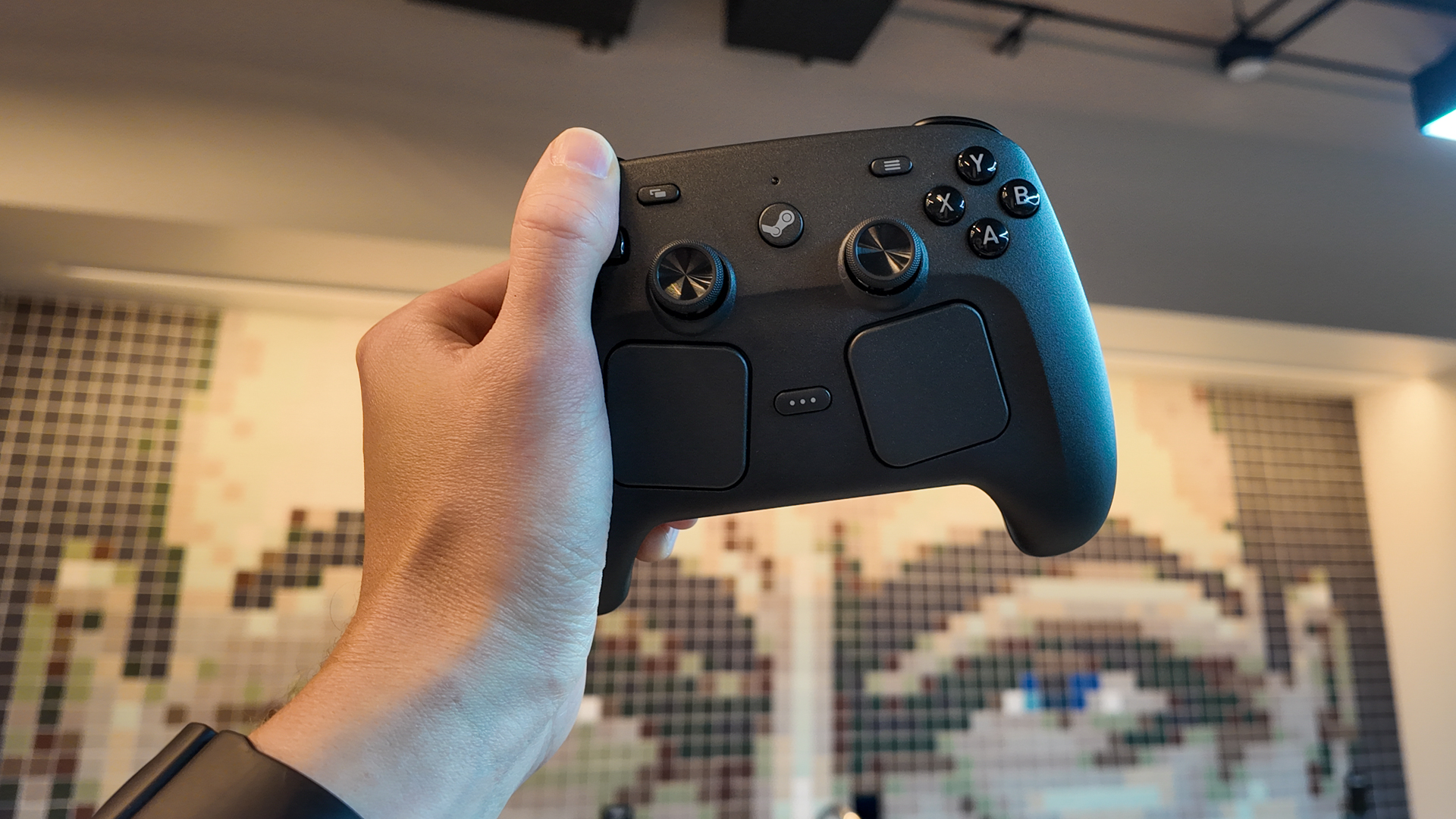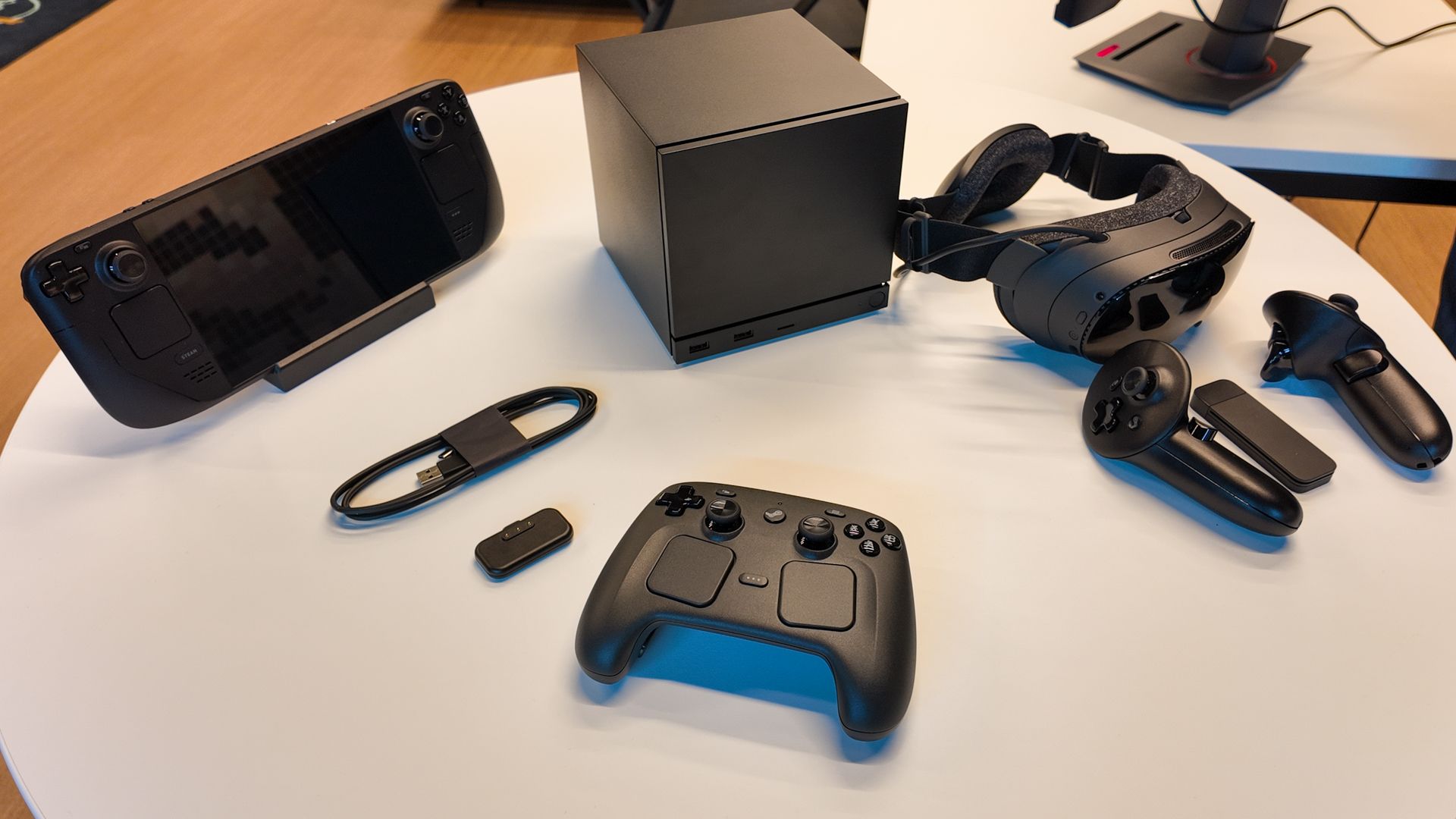Valve has officially unveiled its next-generation hardware lineup, announcing three new products that will expand the Steam ecosystem beyond the popular Steam Deck. The gaming giant revealed the Steam Machine, Steam Frame VR headset, and Steam Controller, all scheduled to launch in early 2026 and running on Valve's SteamOS platform.
How Valve's Hardware Ecosystem Is Coming Together
Following the success of the Steam Deck, Valve is creating its very own ecosystem of products designed to work seamlessly together. "From the Frame to the Controller to the Machine, we're a fairly small industrial design team here, and we really made sure it felt like a family of devices, even to the slightest detail," Clement Gallois, a designer at Valve, told PC Gamer during a recent visit to Valve HQ. "How it feels, the buttons, how they react… everything belongs and works together kind of seamlessly."
The announcement marks Valve's most significant hardware expansion since the Steam Deck's launch, positioning the company to compete more directly with traditional console manufacturers and VR headset makers. All three products will be available in the same regions as the Steam Deck at launch, including the United States, Canada, United Kingdom, Germany, France, Australia, Japan, South Korea, Taiwan, and Hong Kong.
Steam Frame: A Steam Deck for Your Face
The Steam Frame represents Valve's return to the VR space six years after the Valve Index debuted in 2019. Unlike its predecessor, the Steam Frame is a completely standalone VR headset that doesn't require connection to a gaming PC. Powered by a Snapdragon 8 Gen 3 processor with 16GB of RAM, the Steam Frame runs SteamOS on an ARM chipset, allowing users to play both VR and non-VR games directly on the device.

"We see it as kind of a fundamental shift in the way that we're looking at VR," Andrew Yang, a designer at Valve, told CNET. "We see Steam Frame as a new way to play your entire Steam library -- not just your VR titles, but also your non-VR titles."
The Steam Frame features pancake lenses with 2,160 x 2,160 resolution per eye and a 110-degree field of view. Weighing just 435 grams, it's lighter than Meta's Quest 3 and features a modular design with the battery pack located in the back strap for better weight distribution. The headset includes four cameras for inside-out tracking, eye tracking for foveated rendering, and can run games at up to 120 Hz or an experimental 144 Hz.
Steam Machine: Valve's Living Room Gaming Box
The Steam Machine marks Valve's return to the console-PC hybrid concept first attempted a decade ago. This time, the company has learned from its previous missteps and the success of the Steam Deck. The compact black cube is designed to fit into standard-sized shelving units and features a six-core AMD Zen 4 CPU paired with a semi-custom AMD RDNA 3 GPU with 28 compute units.

According to Valve, the Steam Machine offers approximately six times more performance than the Steam Deck and is capable of 4K gaming at 60 frames per second with ray tracing support. The system includes 16GB of RAM and storage options of 512GB or 2TB, with cooling handled by a single 120mm fan and large heatsink. Port selection includes USB Type-C, HDMI 2.0, DisplayPort, and a microSD card slot for transferring games between Steam devices.
Early hands-on impressions from journalists who visited Valve's headquarters showed promising performance with games like Cyberpunk 2077 running well, though some titles like Silent Hill experienced graphical stutters that Valve expects to resolve before launch.
Steam Controller: Learning From Past Mistakes
The new Steam Controller represents Valve's second attempt at creating the perfect PC gaming controller, and this time the company has addressed the criticisms of its predecessor. Unlike the original Steam Controller that featured trackpads instead of thumbsticks, the new version includes two thumbsticks using stick-drift resistant Tunnel Magnetoresistance (TMR) technology.

The controller maintains the Steam Deck's control scheme with two trackpads positioned beneath the thumbsticks, dual triggers, and gyro controls that activate when lightly touching the capacitive-touch analog sticks or rear grip buttons. It supports Bluetooth and a dedicated 2.4 GHz connection via an included "puck" that can connect up to four controllers simultaneously and doubles as a magnetic charger.
With a battery life of over 35 hours and compatibility with Steam Machine, Steam Deck, and Steam Frame, the Steam Controller is designed to be the unifying input device across Valve's hardware ecosystem.
What Happens Next: The Road to 2026 Launch
While Valve has confirmed the 2026 launch window for all three products, the company has not yet announced pricing details. The Steam Machine will be available both with and without the Steam Controller, giving consumers flexibility in how they build their gaming setup.
For the Steam Frame, Valve is working on game verification similar to the Steam Deck's process, prioritizing titles based on customer interest from wish lists and purchases. The company is also exploring whether to release a standalone version of Half-Life: Alyx for the new headset.
Valve's approach suggests these technologies could eventually extend to third-party products, similar to how SteamOS now runs on several Windows handhelds. The company appears to be building an interconnected ecosystem where Steam games can be played seamlessly across different form factors, from handhelds to living room consoles to VR headsets.
Key Takeaways from Valve's Hardware Announcement
Valve's triple hardware announcement represents the company's most ambitious expansion beyond software and digital distribution. The Steam Machine offers a console-like PC gaming experience, the Steam Frame brings standalone VR to the Steam ecosystem, and the Steam Controller provides a unified input solution across all devices.
With all three products running SteamOS and designed to work together seamlessly, Valve is positioning itself to compete across multiple gaming hardware categories while maintaining the flexibility and openness that has defined the PC gaming experience. As the gaming industry continues to evolve with Microsoft's "Xbox everywhere" approach and Nintendo's modular Switch 2, Valve's multi-device strategy could redefine how gamers interact with their Steam libraries across different platforms.


